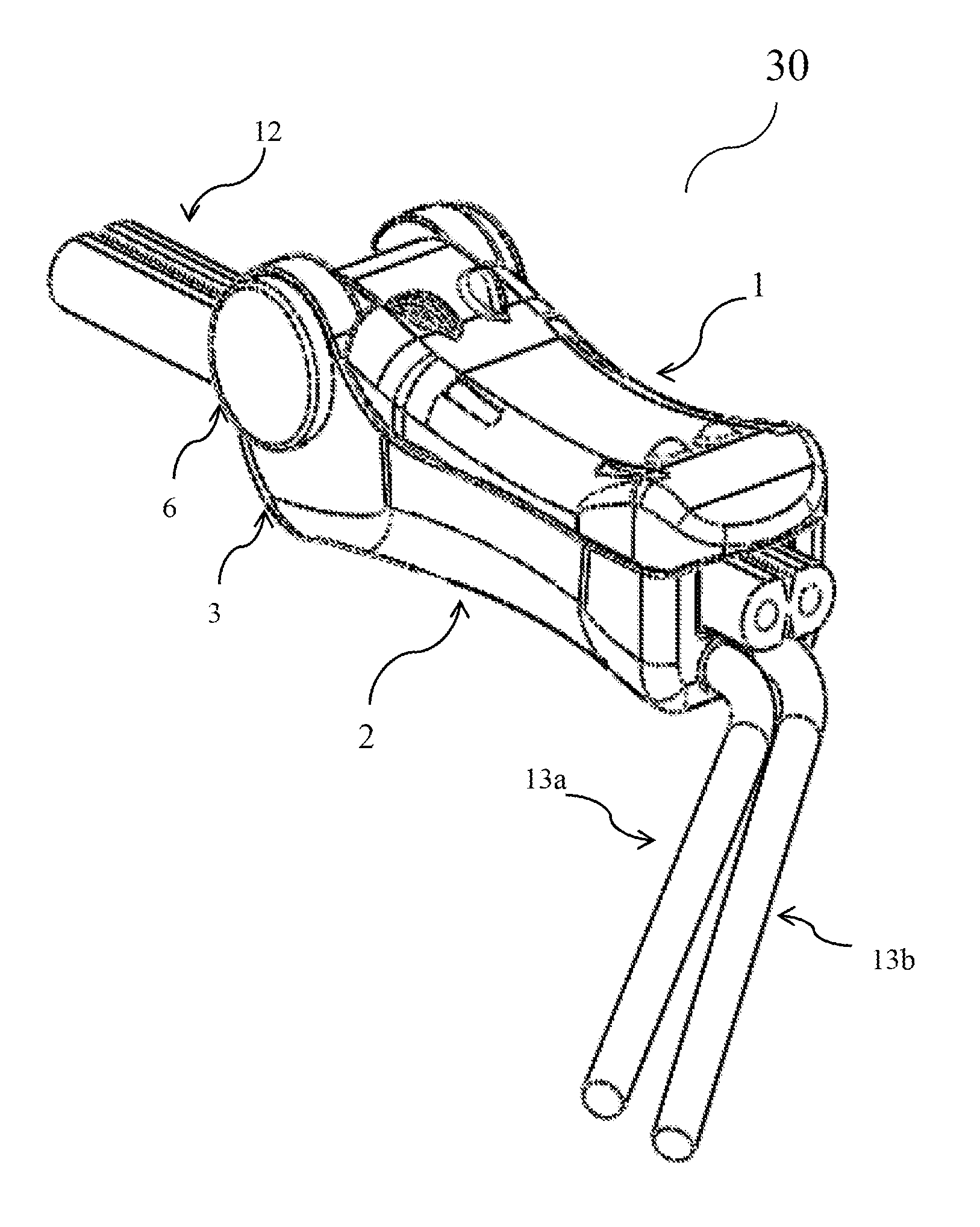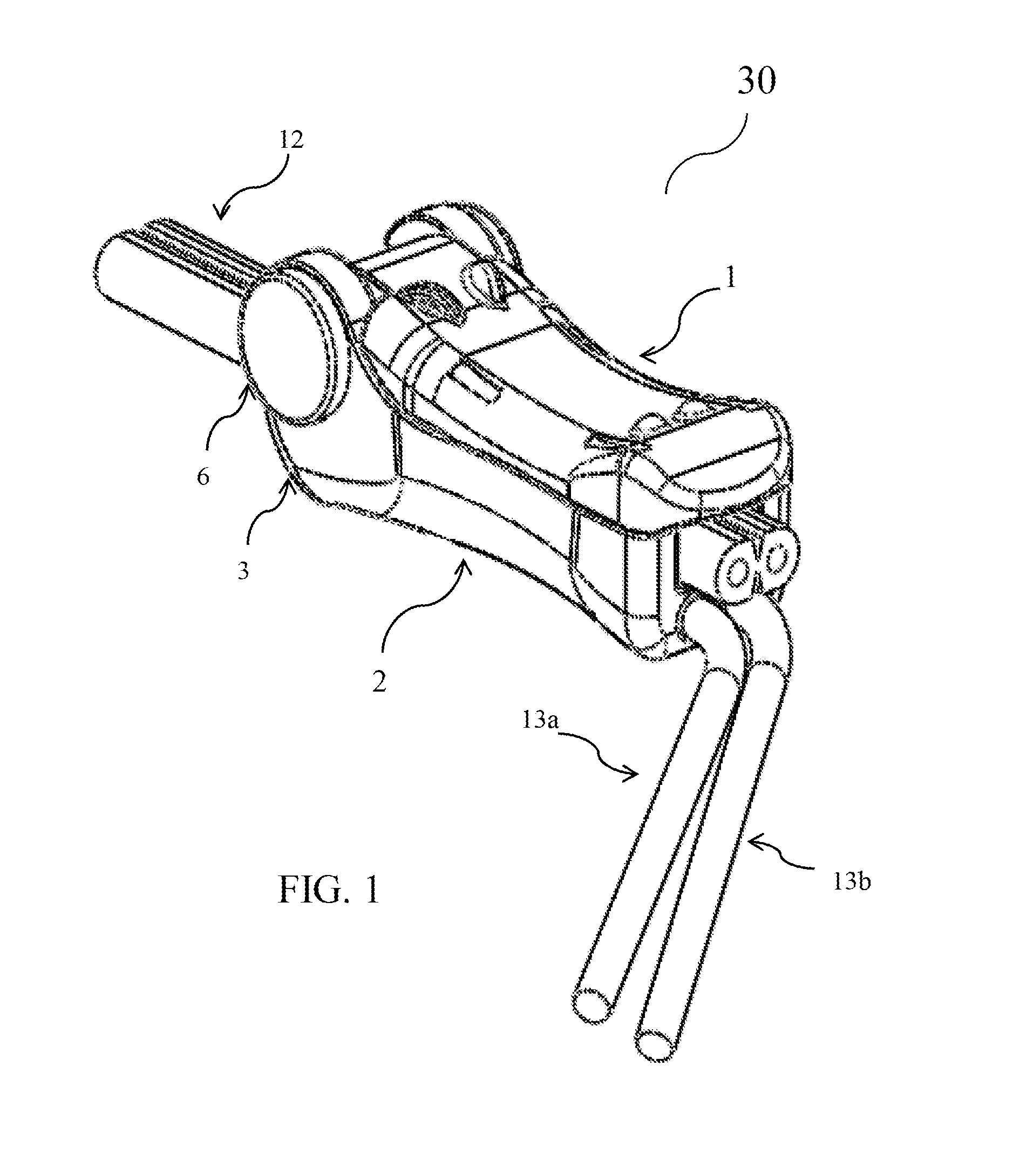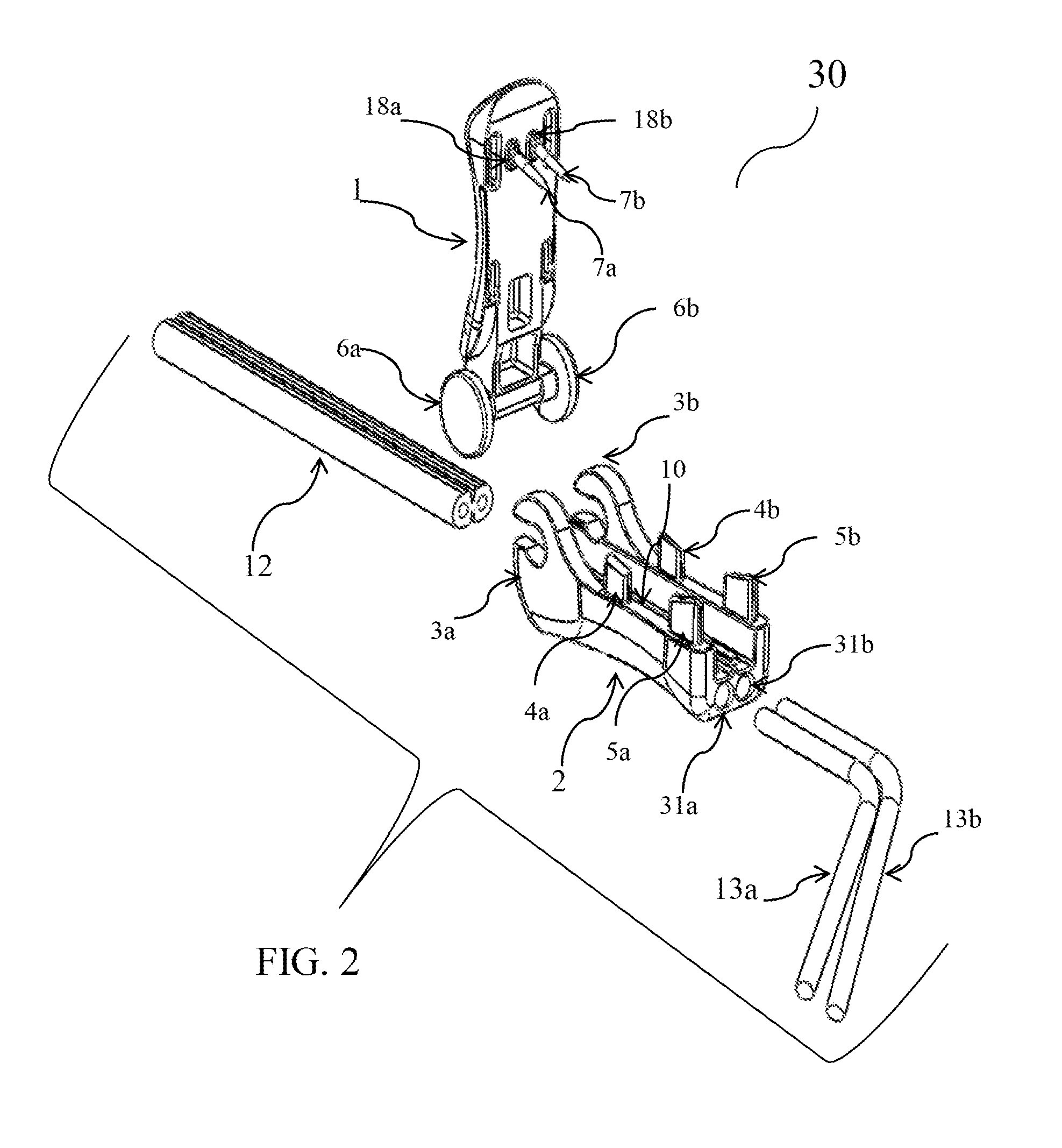Electrical connector assembly with detachable pivot shaft and pivot hub with insert
a technology of electric connectors and pivot shafts, which is applied in the direction of connection contact members, contact members penetrating/cutting insulation/cable strands, coupling device connections, etc., can solve the problems of limiting the ability of connectors to effectively pierce insulated, low voltage connectors in the prior, and inability to hold and pierce better quality low voltage cables, etc., to achieve accurate and easy penetration of conductor wires
- Summary
- Abstract
- Description
- Claims
- Application Information
AI Technical Summary
Benefits of technology
Problems solved by technology
Method used
Image
Examples
Embodiment Construction
[0045]The present invention is a cable connector assembly with a detachable pivot shaft and pivot hub to connect the primary 0v-49v DC direct burial source conductor (DBR) to fixture conductors used in outdoor lighting and irrigation systems. The exemplary embodiment of the invention has fixture conductor channels molded into the base pivot hub section of the connector assembly. In yet another exemplary embodiment of the invention, an insert device is configured with the fixture conductor wire channels to hold the fixture conductor wires on the base pivot hub section above the source conductor wire held in the source conductor wire channel at the bottom of the base pivot hub section of the connector assembly.
[0046]Referring now to the drawings, more particularly to FIG. 1 a perspective view of the exemplary embodiment of the cable connector 30 of the present invention is shown having a unique alligator design. In this embodiment of the cable connector 30 shown in the closed configur...
PUM
 Login to View More
Login to View More Abstract
Description
Claims
Application Information
 Login to View More
Login to View More - R&D
- Intellectual Property
- Life Sciences
- Materials
- Tech Scout
- Unparalleled Data Quality
- Higher Quality Content
- 60% Fewer Hallucinations
Browse by: Latest US Patents, China's latest patents, Technical Efficacy Thesaurus, Application Domain, Technology Topic, Popular Technical Reports.
© 2025 PatSnap. All rights reserved.Legal|Privacy policy|Modern Slavery Act Transparency Statement|Sitemap|About US| Contact US: help@patsnap.com



